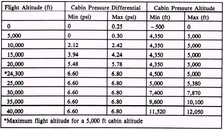The problem is not so much to do with the amount of nitrogen in the body (although it obviously has an effect); the problem is more to do with the pressure differential (or pressure gradient) and the rate at which the pressure gradient increases.
Two analogies: Firstly, the classic bottle of soda. Shake it up and imagine the difference between twisting the cap off really slowly (safe ascent rate, slow off-gassing) to twisting it off really quickly (soda everywhere)
Secondly - a 40 metre high hill. If the descent from 40 metres to 0 metres is spread over 10 kilometres, you will roll down that hill on your skateboard relatively sedately. If it drops from 40 metres to zero metres over a 10 metre horizontal distance, you will wipe out.
The important thing is that the pressure in the bottle, and the height of the hill, are identical in both circumstances. What's different is the rate at which they change over time. Although an aircraft cabin is pressurised, it is pressurised to less than the equivalent at sea level, which means that the ambient pressure (that which surrounds you) actually decreases pretty rapidly. It's what makes your ears go pop a few minutes over take off.
Also an addition to the note about saturation; which is not the specific issue - saturation with regards to absorption of Nitrogen whilst diving means the body tissues are "full" of gas and have reached a state of equilibrium with the ambient pressure - no more gas can go in, and no more gas can go out - but according to the decompression model, a tissue does not have to be "saturated" to become dangerous; there are separate limits for the different theoretical tissues in the model - and it's important to remember that despite extensive testing, it is still purely theoretical. Supersaturation, on the other hand, simply means that the pressure outside the "vessel" is less than that on the inside - in both of the earlier analogies, one could consider that both the hill and the soda bottle are "supersaturated" - but not necessarily dangerously so.
In very basic terms, for no-decompression recreational diving, the danger is in the rate at which things happen, rather than the amount we have absorbed, although the two are inevitably linked.
Hope that helps
C.





